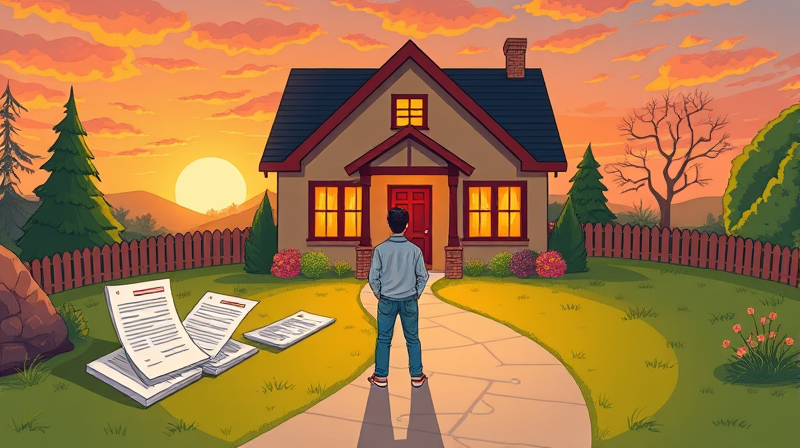Embarking on the journey to homeownership can feel overwhelming, but with the right roadmap, you can navigate each stage with confidence and clarity. This guide unpacks every step from pre-approval through closing, offering practical advice and emotional encouragement to help you secure your dream home.
Pre-Approval: Laying the Groundwork
Before you begin house hunting, obtaining a mortgage pre-approval is essential. This phase gives you a clear sense of how much home you can afford and strengthens your position in the competitive real estate market.
During a pre-approval review, lenders will:
- Analyze your credit scores and history
- Verify income and employment records
- Evaluate assets, debts, and savings
- Estimate potential loan amounts and rates
With a pre-approval letter in hand, you’ll know your budget and show sellers you’re a serious buyer. This document typically remains valid for about 120 days, giving you ample time to explore options without losing momentum.
House Hunting: Balancing Budget and Dream
Once pre-approved, it’s time to find a home that meets both your needs and your budget. Keep in mind that your mortgage payment will include:
loan principal, interest, property taxes, homeowners insurance, and possibly PMI if your down payment is under 20%. Carefully factor these costs into your monthly budget to avoid financial strain.
House hunting can be emotional—seeing beautiful kitchens and sunlit living rooms stirs the heart. Yet, maintaining a practical mindset is crucial. Create a list of priorities, such as location, school district, and size, then stay open to compromise where possible. Remember, patience pays off: rushing could lead to buyer’s remorse.
The Mortgage Application: Putting Paperwork in Place
After your offer is accepted, you’ll formally apply for the mortgage. The application process usually spans two weeks to two months, depending on the lender’s workflow. To streamline this phase, assemble the following documentation early:
- Income verification: pay stubs, W-2s, tax returns
- Employment history: letters from employers, contracts
- Assets and debts: bank statements, investment accounts
- Credit information: authorization for credit checks
- Personal identification: driver’s license, Social Security number
After submitting your application, you’ll receive a Loan Estimate within three business days. This legally required disclosure outlines your interest rate, monthly payments, and estimated closing costs. Comparing Loan Estimates from multiple lenders can save you thousands over the life of your mortgage.
Loan Processing and Underwriting: The Lender’s Review
With your application in hand, the lender’s processing team verifies every detail. Underwriting follows closely: an underwriter assesses your creditworthiness, debt-to-income ratio, and the property’s value.
A property appraisal ensures the home’s market value meets or exceeds the loan amount, protecting both borrower and lender. At this stage, your mortgage may be approved outright, conditionally approved pending additional documents, or denied if any criteria aren’t met.
Communication is critical. Respond promptly to any lender requests for extra information. A small delay—like missing a bank statement—can extend your timeline and increase stress. Stay organized by keeping original documents accessible and tracking submissions.
Mortgage Type Comparison
Different mortgage products serve different needs. Below is a quick overview to help you decide which path fits your circumstances:
Closing Day: Turning Paperwork into Possession
After underwriting clearance, you’ll receive a clear-to-close notification. A few days before closing, review your Closing Disclosure, which outlines final loan terms and closing costs. Make sure these numbers align with your Loan Estimate, and raise any discrepancies with your lender immediately.
On closing day, you’ll sign a stack of documents—legal declarations that transfer ownership and cement your mortgage agreement. Be prepared to pay closing costs, which typically range from 2% to 6% of the loan amount. Once the ink dries, you’ll receive the keys and officially become a homeowner.
Tips for a Smooth Mortgage Journey
- Maintain consistent financial behavior: avoid new debt.
- Respond promptly to lender inquiries: save time and stress.
- Gather documentation early: streamline your application.
- Shop multiple lenders within a short timeframe.
- Schedule home inspections as soon as offers are accepted.
The path to homeownership is a significant milestone that combines dreaming with diligent planning. By following these steps—pre-approval, careful house hunting, thorough application preparation, responsive communication during processing, and meticulous closing review—you’ll move through the mortgage process with confidence and peace of mind.
Remember, each borrower’s journey is unique. Stay patient, ask questions, and lean on professionals when needed. With preparation, perseverance, and the right support, you can transform a stack of paperwork into the front door of your new home.
References
- https://www.investopedia.com/mortgage-process-explained-5213694
- https://www.bankofamerica.com/mortgage/learn/guide-to-the-mortgage-loan-process/
- https://www.usbank.com/home-loans/mortgage/first-time-home-buyers/mortgage-process.html
- https://www.libertybank.com/understanding-the-mortgage-process-a-step-by-step-guide/
- https://www.morty.com/resources/mortgage-manual/the-mortgage-journey/mortgage-timeline
- https://www.chase.com/personal/mortgage/education/financing-a-home/mortgage-application
- https://www.nerdwallet.com/article/mortgages/how-to-apply-for-a-mortgage










